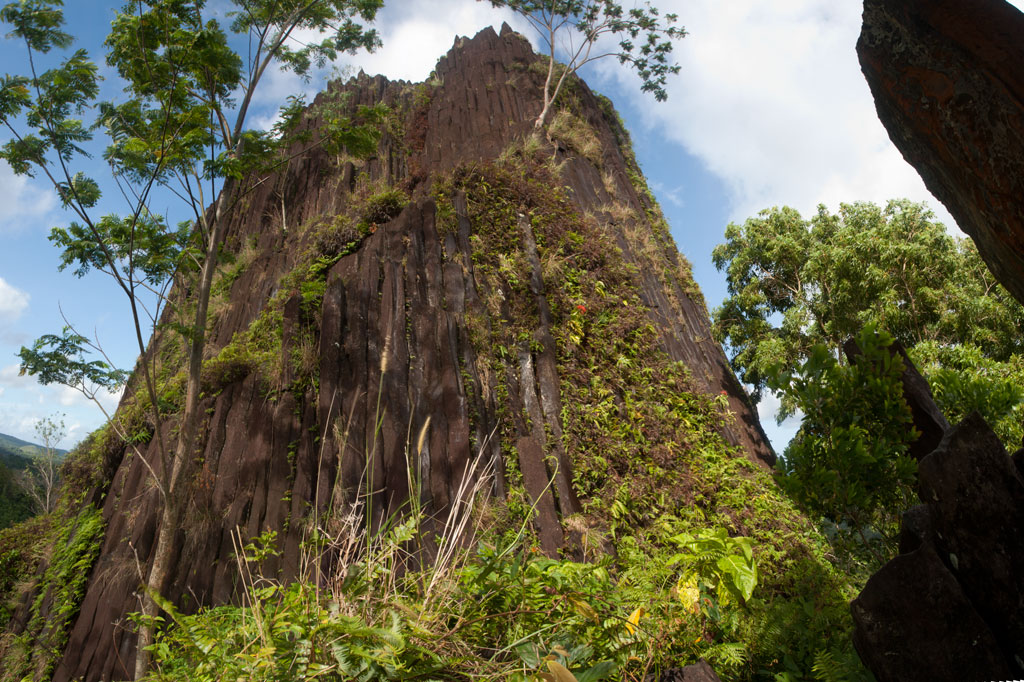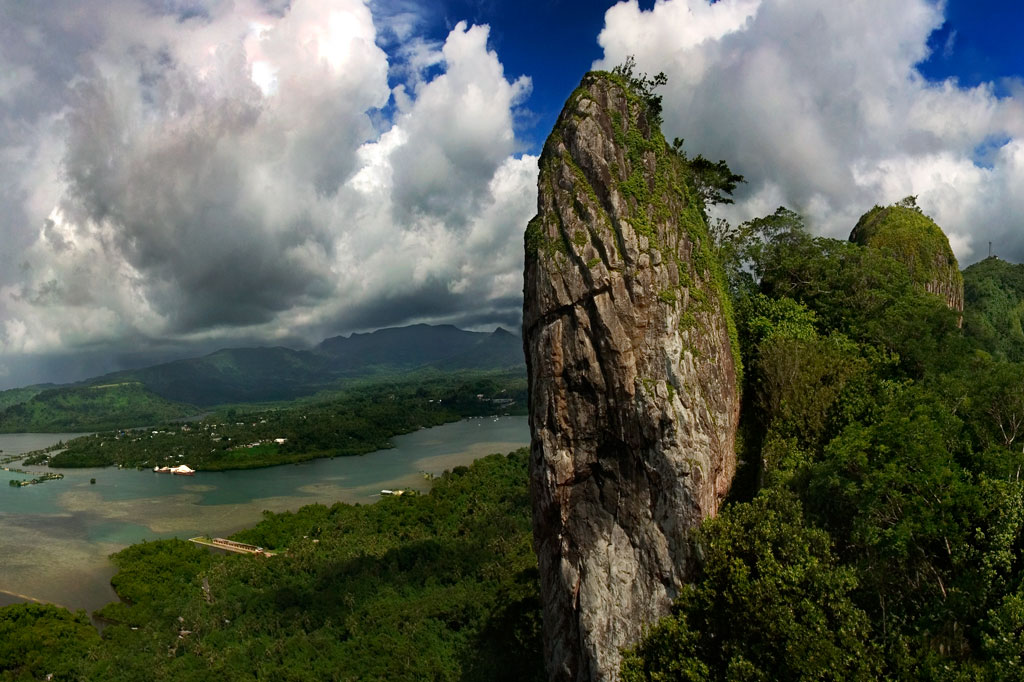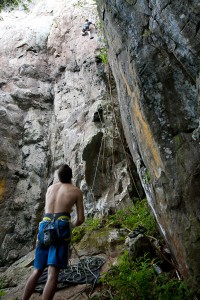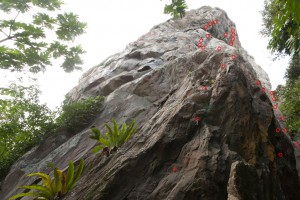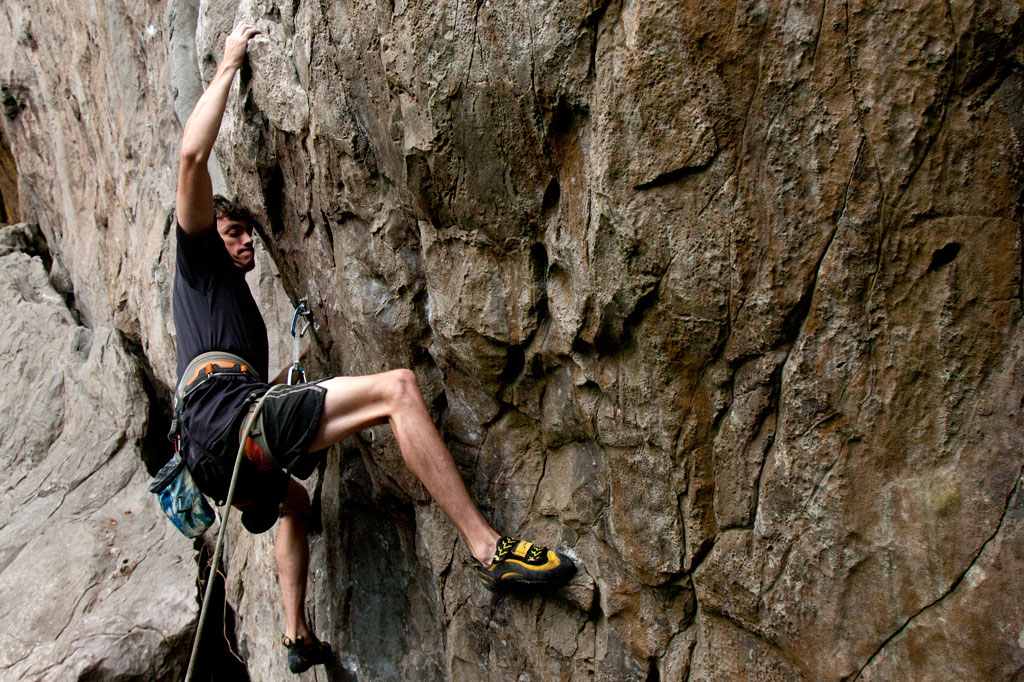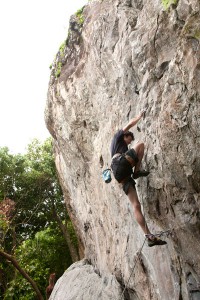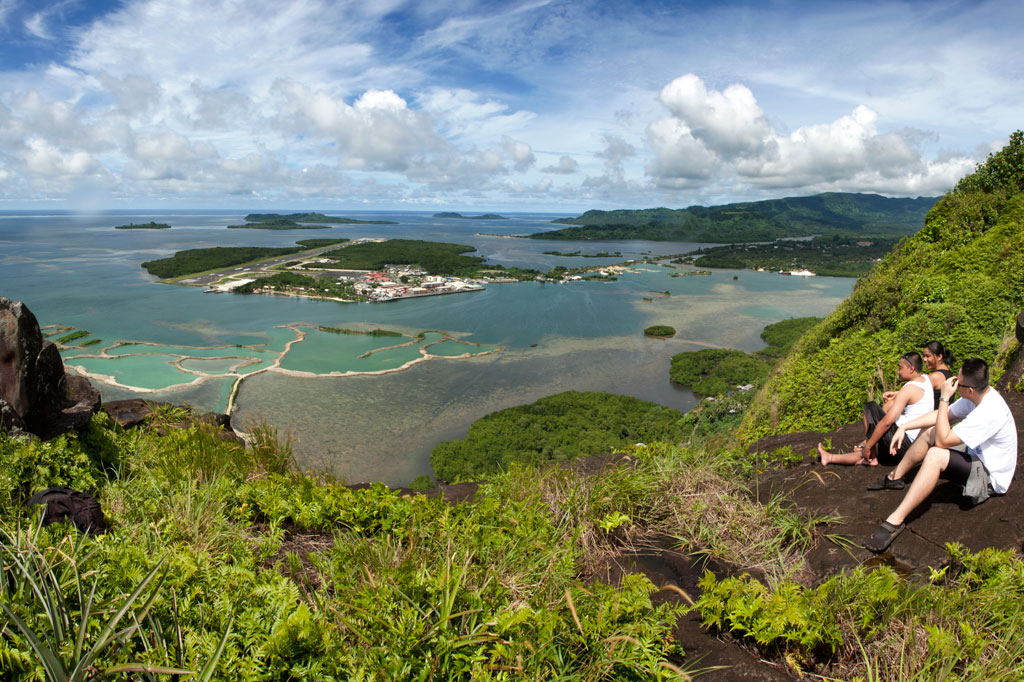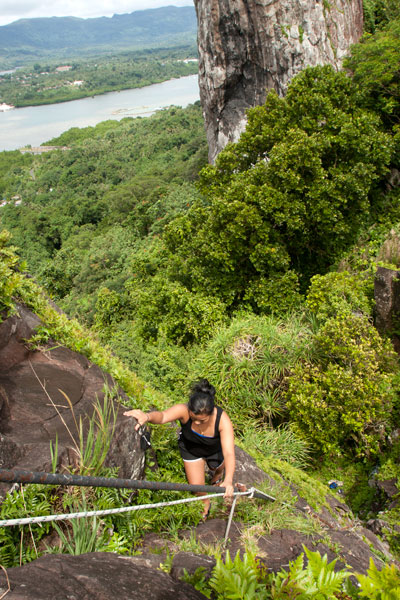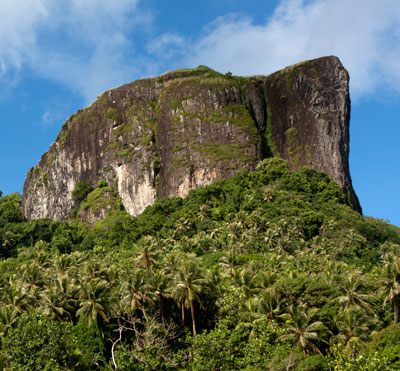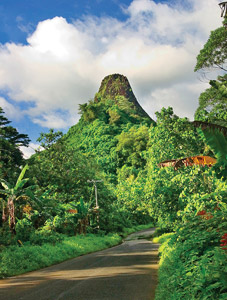
The disputed Sokehs-Kitti border is marked by Pwisehn Malek, a strange hill of columnar basalt rock that resembles a cartoon volcano and looms over the road. According to legend, the formation was created by the droppings of a magical rooster — hence the name, which literally means “chicken shit.” Pwisehn Malek makes a fun little half-day hike with a semi-technical free-climb at the end. The 242 meter trail, which can be followed without a guide, begins in Paies at the edge of the Circle Island Road about 0.6 km (0.37 mi) past the College of Micronesia National Campus. The track is generally easy to discern as it snakes up the steep, grassy hillside without crossing private land. The hill has some scattered trees, but is mostly open to the sky, providing excellent views as one climbs. At the top of the hill, a narrow pinnacle of basalt prisms stabs out of the grass not far from the base of the main rock. If you don’t intend to go further, this is an amazing spot for lunch and photos with a panoramic view of the surrounding landscape, including Temwetemwensekir (mountain), the College of Micronesia campus, and the green, rolling topography of Palikir.
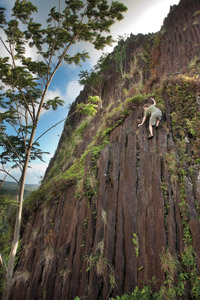
The view from the summit is even better, however, so if you’re brave and sure-footed, you might consider the task of scaling it. We can attest that it looks worse than it is. Though the lower pitch seems sheer at first glance, there is actually a series of natural steps created by the vertical basalt prisms, providing excellent hand and footholds. Just take it slow and look around you. Once you get to the top of the first pitch, the remainder is much easier and not so exposed. The summit is rather small and mostly flat. You can see in every direction for miles and miles. We’ve given the climb an informal rating of 5.4X — it is not terribly difficult, but there is no natural protection, and a fall at the wrong place could potentially be fatal. Proceed with extreme caution. It is not advisable to climb on wet days, as the rocks can become slick when wet, or alone, as no one will be there to help you if you hurt yourself. Remember — Pohnpei has fairly basic medical facilities and no rescue service. Use good judgement.
Pwisehn Malek is one of the locations where archaeologists believe stones used in the construction of Nan Madol may have been quarried. How massive basalt prisms were transported from Sokehs all the way around the island to Temwen is anyone’s guess. Bamboo rafts have been proposed, but no one has successfully demonstrated the process with a really large stone. Stones were probably separated from the outcropping using a process of repeated heating and cooling. Fires might have been built at the base of the rock to heat the stones, which were then cooled suddenly with river water, causing them to crack. After that they could be pried off and dragged down the hill.
- Plan for 1 hour for this hike. No fees are charged at this location and the hike can be done without a guide.


